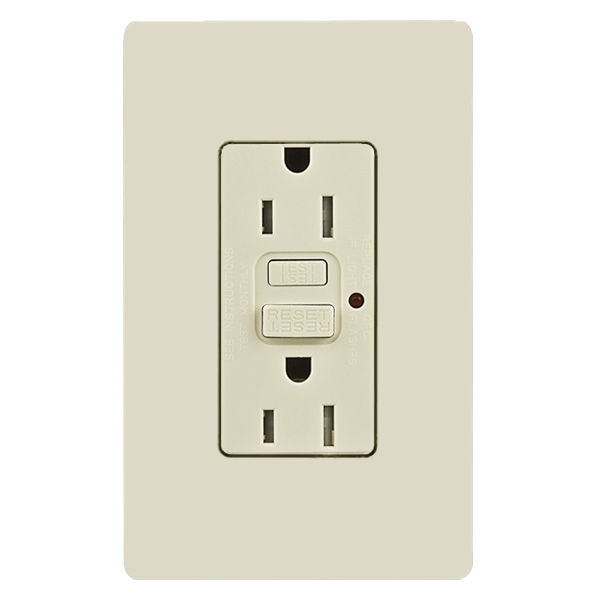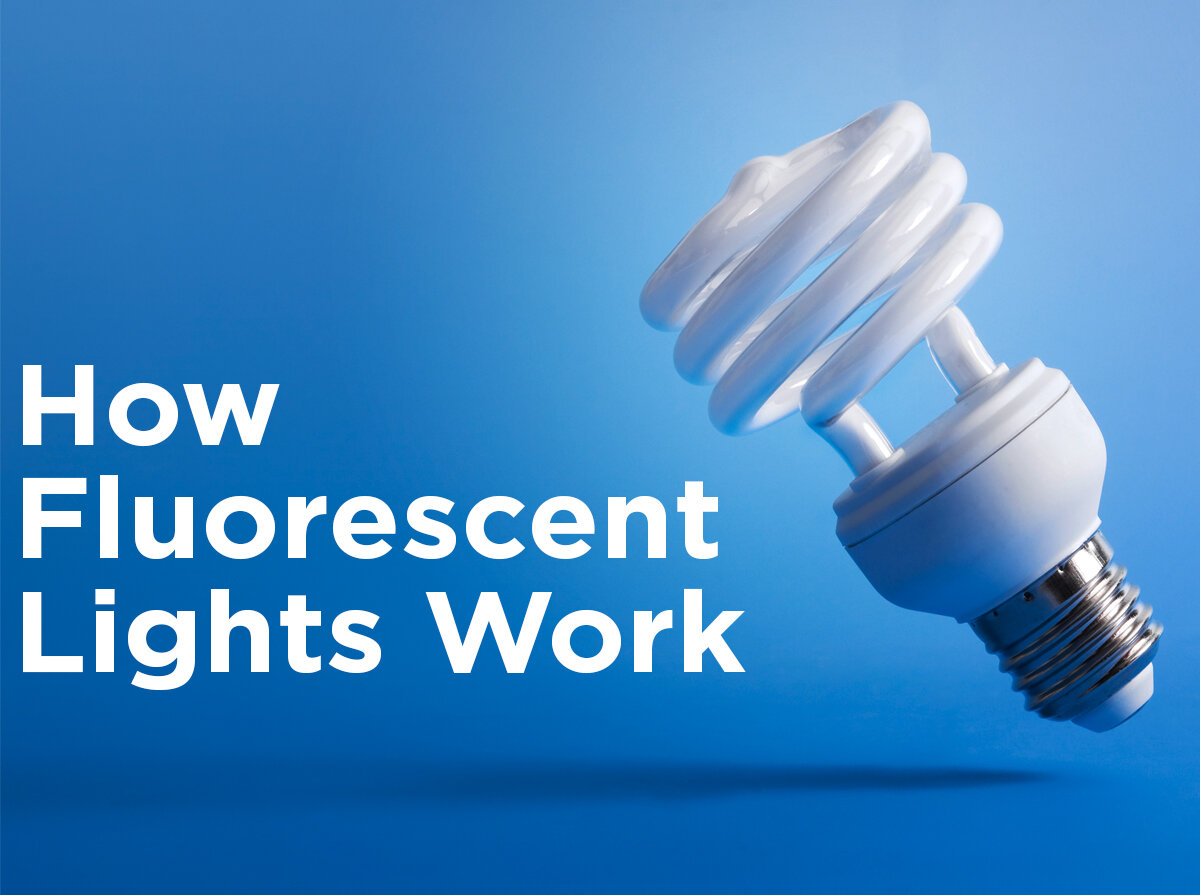HELP! My Lights Don't Work
Here at 1000Bulbs, we do our best to answer your lighting conundrums and queries, while preventing foreseeable catastrophes. Many requests for help begin with “my lights won’t turn off”, “don’t dim”, “they buzz”, or “flicker”. While we have addressed some of these topics individually in the past, this article is intended to be an inclusive checklist of common issues. If you find yourself facing a day in the dark, the following subjects could be the proverbial flashlight to your lighting debacle.
GFCI receptacle outlet
Heat Heat is a killer of bulbs. No matter what type of bulb you have installed in your home, if the bulb is not properly ventilated you will significantly reduce its lifespan due to overheating. We know that incandescents put off a lot of heat and, on the other end of the spectrum, LEDs expel far less heat. Yet the heat sink surrounding the actual LED diodes of the bulb is the reason some LEDs are considered unattractive. This heat sink draws heat out and away from the diodes, keeping the bulb cool and allowing the LED to glow longer. Any fixture, especially one that encloses the whole bulb, should be fitted with a bulb rated for that use. Bulbs that are rated as “suitable for enclosed fixtures” will say so in their specifications or you can check the manufacturer’s website.
GFCI outlets GFCI stands for “ground-fault circuit interrupter”. Usually found in areas that are subject to moisture (i.e. bathrooms, kitchens, garages, etc.), GFCI outlets provide protection from accidental shocks via the electrical devices used in homes. If there is a difference in current, in the range of a few milliamps, that means current is leaking out and the outlet quickly cuts off the power to the divulging device. These outlets have two buttons between the receptacles, labeled “test” and “reset” respectively. When your lamps keep you in the dark, check for GFCI outlets and press the reset button to regain power. As you push the button, a click sound lets you know the power was cut off. Check your lights and devices to see if they work, then check all the outlets in a room for other GFCI outlets and push their reset buttons to make sure the power has restored completely.
Incompatible dimmers Did you know that every LED-compatible dimmer may not work with your LEDs? Incompatible dimmers are highly likely culprits when your lights fail to turn completely off or they make a humming noise. Dimming ability is usually a percentage. A good dimmer can reduce light levels to about 10 percent of full light. Manufacturers of dimmable LEDs often include a list of dimmers tested for compatibility and how well the dimmers performed. Some of the dimmers on the list will have the ability to dim your lights partially, others will perform to the stated percentage. If your dimmer isn’t on the list, that doesn’t disqualify it from working with your lights but it does mean that your dimmer may not work as effectively. Furthermore, a dimmer installed incorrectly may cause a humming or buzzing sound as well. Check the specs or the manufacturer’s website of your dimmable LEDs to find recommended dimmers.
Over Efficient LEDs You can buy LEDs that will light up like the sun and use a small fraction of the energy. However, sometimes your LEDs can be too efficient. In the case of dimmable LEDs, if you are sure you have a compatible dimmer but your lights continue to glow, you could have an electrical load too small for the dimmer to recognize. Typically you dim your LEDs, but since your lights only consume a small amount of power, dimming them reduces that power even more. You reach a point where the dimmer cannot reduce the current any further and yet your lights remain on. Another scenario is where the dimmer switch is off but if your dimmer has a locator light or allows a three-way option, there is still current running through the switch and into your LEDs. Either way, a solution to your murky mishap is to install a “dummy” load on the same circuit as your LEDs. A dummy load is simply a device, a bulb or resistor, which will raise the power consumption to a level the dimmer can successfully reduce. Typically, easy dummy loads include a low-wattage incandescent bulb or even nightlight. A less visible but more technical answer involves wiring a small resistor into the circuit with the dimmer switch.
Loose Wires and Bulbs More subtle than a few straightforward clockwise rotations, a loose bulb can occur sometimes when the neck of the bulb has a slightly larger diameter. The larger diameter is not enough to prevent it from going into the socket but it may be enough to keep the bulb from reaching all the way to the bottom of the socket where the current is flowing. This issue is more likely to happen with BR30 and BR40 lamps because they have a bulging reflector installed. Where the reflector meets the base, the bulge may bump against the fixture walls and restrict a full insertion.
Loose wires are a more serious issue and you should always call an electrician when you suspect loose wires are your problem. Sudden flickering lights or a series of simultaneous burnouts are an obvious sign of loose wires. Fluctuations between bright and dim lights could indicate voltage spikes and drops caused by loose or corroded neutral wires in your circuit breaker or fixture. Immediately cut off the power to that area of the house and try to identify the problem area. If you see loose wire or corrosion, call an electrician. We cover more about flickering lights and loose wires in our articles entitled Why Do My Bulbs Keep Burning Out?, What Is Causing My House Lights To Dim?, and Flickering Lights: When You Need To Worry.
Circuit breakers A tripped circuit breaker is well-known occurrence and easy to remedy. However, if you get to your service panel and all the switches are still in the “on” position, you will need to systematically turn each switch off and then on again to restore power. Sometimes this is necessary because the circuit breakers will “trip” but not move all the way into the off position, making it difficult to determine which circuit you overloaded.
Remember to protect your large electronics and power down items like TVs and computers before manually tripping circuit breakers.
Harmonic and Electromagnetic Interference There are several bits of science involved in this lighting riddle. Basically, harmonic or electromagnetic interference is the result of some other large electrical device resonating on the same wavelength as your lights. This syncing of frequencies can cause your lights to hum or buzz. LED bulbs are prone to this kind of interference; microwaves, space heaters, humidifiers, changes in AC settings, or even fluorescent lights on the same circuit as your LEDs can be the source of the noise. You will need to systematically turn off large electrical devices, if the buzzing disappears; you’ve found your problem. You can try to switch the device causing the buzz to a different circuit by changing outlets. You can read more about the causes of humming lights in our article, Why Do My Lights Hum?
Utility Equipment Sometimes your lighting mystery doesn’t involve your house at all. We have come across customers in new construction houses with strange electrical dilemmas, flickering lights and sudden “brownouts”, a rapid decrease in the power current being supplied to the house. Despite their best efforts, they find out that it’s not the house but trouble with the transformer. A brownout that cannot be linked to faulty wiring inside the house or incompatibility could possibly be the result of a loose neutral, grounded main conductor. These conductors are found where the electricity enters your main service panel (i.e. the main breaker box) or where the power from utility company reaches the nearest transformer to your house. At this point, you need to call your utility company and ask them to come out to check the transformer for loose conductors and the power current output. This predicament is further explained in our series, When To Call an Electrician.
If all else fails, call an electrician to track down the source of your problem—it’s what they do. Any more questions about finding dimmer compatibility lists, discussions about the likelihood of a poltergeist taking up residence in your house, or recommendations for a quality sledgehammer can be found in the comments below. You can find more about “what not to do when electricity is involved” on our Facebook, Twitter, LinkedIn, or Pinterest. The scintillating staff at 1000Bulbs.com is running drills as we speak, ready to dash to the phone and tell you “don’t cut the red wire!”








